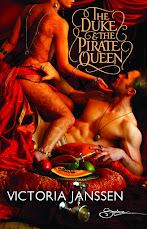My new book from Harlequin Spice, a historical with werewolves, is titled The Moonlight Mistress and it's out this month. I've been amusing myself by going through my copy and re-reading my favorite moments, many of which are bits of historical detail. I love the tiny bits best.
See, I am a total geek and really love research for its own sake. It grieves me that I don't have time to read every one of my research books cover to cover…I buy rather more research books than I really need, and some of them are only peripherally related to the topics of my novels, but they're all just so interesting! And that's not even counting the books I check out of the library.

Just in case some of you readers are research geeks as well, here are my favorite World War One historical bits from The Moonlight Mistress and where I found them. I think that often the most interesting details, that give the greatest sense of realism to the narrative, are not the most major. It's the tiny, unusual facts that stand out for the reader.
The novel's opening line is "There were no trains to Strasbourg." And this is absolutely true. When the first declarations of war were flying back and forth, all sorts of daily activities were affected. I pored over Lyn Macdonald's 1914: The Days of Hope
"Best of all, there was a shower…with brass fittings on three walls in the shape of lily blossoms, and tiled in green-and-white patterns like lacework." Though I took liberties with the decorative elements, this idea of this period-appropriate shower originated in one I actually saw, at Casa Loma in Toronto; the real shower actually had six taps at three different levels. As a side note, the fancy ducal stables in The Duchess, Her Maid, The Groom and Their Lover were based on stables I saw at Casa Loma.
The extensive section on the arrival of the British Expeditionary Force in France, and the subsequent battle and retreat, was mostly drawn from first-person accounts in Macdonald's 1914 with some fragments of information coming from several more general accounts of the First World War, including John Keegan's The First World War
Many of the quotidian details about the lives of the British soldiers I drew from Tommy: The British Soldier on the Western Front 1914-1918

Finally, most of the information about the hospital where Lucilla goes to work were extrapolated from The Women of Royaumont: A Scottish Women's Hospital on the Western Front
I could go on, but I think I've made my point. At the start of a project, you never know what details you might need and which sources might have the best details, so it's best to check out a wide range, and to pay close attention to everything.
Related Posts:
Historical Detail in Fiction.
Synergy in Writing and Research.
Reading for the Writer.




I love the way your teach with facts and research while you entertain with imagination and words. I can see you enjoy your work.
ReplyDeleteThank you!
ReplyDeleteThat is one of the most lovely comments I've ever received.